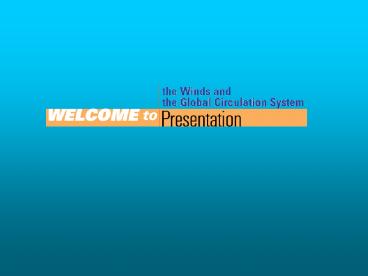Atmospheric Pressure - PowerPoint PPT Presentation
Title:
Atmospheric Pressure
Description:
The Earth's land surface is actually located at the bottom of a vast ocean of air. Like the water in the ocean, the air in the atmosphere is constantly pressing on ... – PowerPoint PPT presentation
Number of Views:4099
Avg rating:3.0/5.0
Title: Atmospheric Pressure
1
(No Transcript)
2
Atmospheric Pressure
The Earth's land surface is actually located at
the bottom of a vast ocean of air. Like the water
in the ocean, the air in the atmosphere is
constantly pressing on the solid or liquid
surface beneath it.
3
Atmospheric Pressure
Atmospheric pressure. This figure depicts
atmospheric pressure as the weight of a column of
air. (a) Metric system. The weight of a column of
air 1 cm on a side is balanced by the weight of a
mass of about 1kg. (b) English system. The weight
of a column of air 1 in. on a side is balanced by
a weight of about 15 pounds.
4
Air Pressure Changes With Altitude
Because atmospheric pressure decreases rapidly
with altitude near the surface, a small change in
elevation will often produce a significant change
in air pressure.
5
Air Pressure Changes With Altitude
Atmospheric pressure decreases with increasing
altitude above the Earth's surface.
6
Wind
Wind is caused by differences in atmospheric
pressure from place to place. Air tends to move
from high to low pressure until the air pressures
are equal. For example, pressure was higher over
Wichita than Columbus, a pressure gradient force
would push air from Wichita to Columbus.
7
Wind
Isobars and a pressure gradient. High pressure is
centered at Wichita, and low pressure is centered
at Columbus.
8
The Coriolis Effect
An object in motion on the Earth's surface always
appears to be deflected away from its course.
This effect is a result of the Earth's rotation,
and is called the Coriolis effect.
See movies on the Coriolis Effect in the
geodiscoveries section of your texts website.
9
The Coriolis Effect
Coriolis effect direction and strength. The
Coriolis effect acts to deflect the paths of
winds or ocean currents to the right in the
northern hemisphere and to the left in the
southern hemisphere as viewed from the starting
point.
10
Surface Winds on an Ideal Earth
A parcel of air in motion near the surface is
subjected to three influences the pressure
gradient that propels the parcel toward low
pressure the Coriolis effect that deflects the
parcel, and the frictional forces of the ground
surface that slow the parcel down.
11
Surface Winds on an Ideal Earth
Global surface winds on an ideal Earth. This
schematic diagram of global surface winds and
pressures shows the features of an ideal Earth,
without the disrupting effect of oceans and
continents and the variation of the seasons.
Surface winds are shown on the disk of the Earth,
while the cross section at the right shows winds
aloft.
12
Global Atmospheric Circulation
Wind and air pressure follow both global and
local patterns. These patterns are affected by
the level of the atmosphere, the hemisphere and
the season in which they occur. See movie on
Global Atmospheric Circulation in the
geodiscoveries section of your texts website.
13
Rossby Waves
The smooth westward flow of the upper-air
westerlies frequently forms undulations, called
Rossby waves.
14
Rossby Waves
Development of upper-air Rossby waves in the
westerlies of the northern hemisphere.
15
Ocean Currents
Just as there is a circulation pattern to the
atmosphere, so there is a circulation pattern to
the oceans.
16
Ocean Currents
January ocean currents. Surface drifts and
currents of the oceans in January.
17
El Niño
At intervals of about three to eight years, a
remarkable disturbance of ocean and atmosphere
occurs. This phenomenon is called El Niño. See
movie on El Niño in the geodiscoveries section
of your texts website.
18
El Niño
Maps of pressures in the tropical Pacific and
eastern Indian Ocean in November during normal
and El Niño years. In normal year (a), low
pressure dominates in Malaysia and northern
Australia. In an El Niño year (b), low pressure
moves eastward to the central part of the western
Pacific and sea-surface temperatures become
warmer in the eastern Central Pacific.
19
(No Transcript)

